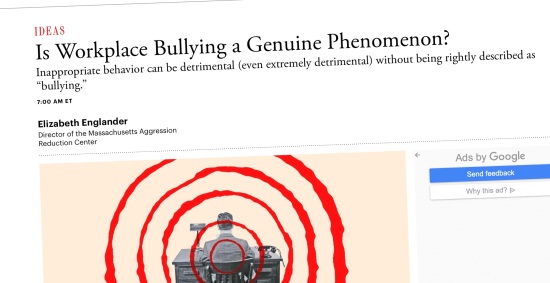We have long known that children who have disabilities are more likely to experience bullying behaviors than their peers who are perceived as being non-disabled. The National Bullying Prevention Center (link here), for example, shares that in 10 U.S. studies examining “the connection between bullying and developmental disabilities, all of these studies found that children with disabilities were two to three times more likely to be bullied than their nondisabled peers.”
Indeed, search the term “disability bullying” and you’ll find the top hits centering almost exclusively around bullying of kids with disabilities. I’m glad that we have established that connection. At the very least, it validates the experiences of those being targeted and helps us to focus on preventive and responsive measures.
What about bullying of adults with disabilities?
We see less attention given to bullying of adults who have disabilities. That’s among the reasons why I welcomed a recent column by disability expert Andrew Pulrang, “The Many Flavors Of Disability Bullying” (Forbes.com, link here):
There are few things as simply and straightforwardly awful as bullying disabled people. But there is so much more to do about ableist bullying than just condemning it.
Ableist bullying is surprisingly difficult to recognize and understand, because it’s more than one thing, and has has many facets and flavors.
Pulrang goes on to identify predominant forms of bullying behaviors directed at adults with disabilities:
- “Simple, superficial mockery,” such as making fun of appearances, physical movements, and mental health conditions;
- “Dismissing complaints” over problems that persons with disabilities might face;
- “Portraying disabled people as privileged and entitled” as they struggle to deal with impairments and seek accommodations;
- Making jokes about someone’s disability in their presence, as if to test their sense of humor; and,
- Gaslighting disabled individuals into questioning their perceptions of reality.
He concludes:
To fight disability bullying, people of all backgrounds and roles need to not only refrain from these bullying behaviors, but also engage with and refute the kinds of thinking and assumptions that prompt them.
The legal angle
At times, those subjected to these forms of mistreatment may have legal recourse via civil rights and anti-discrimination laws. In workplace and public accommodations settings, the Americans with Disabilities Act figures most prominently. Here is where questions of reasonable accommodation come into play.
Furthermore, if someone is being subjected to workplace harassment because of their disability, they may have a hostile work environment claim under the ADA. However, such legal claims are hard to win. Occasional jokes or putdowns about a disability, for example, may not be sufficient to state a harassment claim under the ADA.
Ultimately…
A combination of more enlightened human behaviors and stronger legal enforcement will diminish bullying behaviors directed at people with disabilities. Obviously we have work to do on this front. If you doubt this, then consider that less than six years ago, the U.S. elected a President who cruelly mocked a reporter’s disability while on the campaign trail.
In the past, this one act would’ve been sufficient to self-torpedo any political campaign. I can only surmise that in 2016, some people voted for him in spite of this incident, while others were more inclined to vote for him because of it. Both possibilities teach us sad but important lessons about unfinished business in terms of advancing human dignity.









